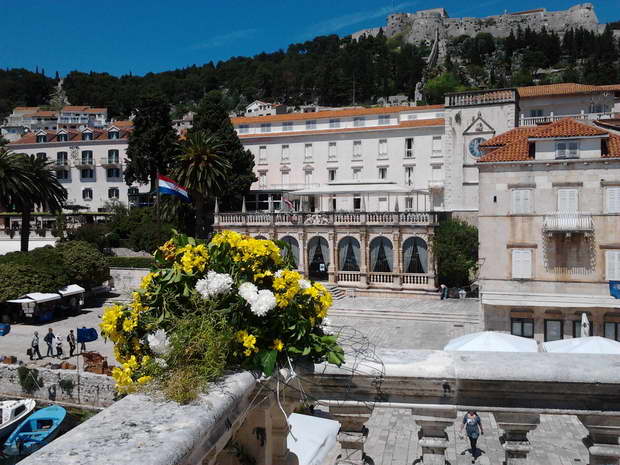Let’s go for a walk together around Hvar, shall we? Discover this beautiful and historic town and island in Dalmatia, Croatia.
The emerald colors of hundred-year-old pine trees merge with the white rocks of Hvar, one of the most beautiful islands in the Adriatic Sea, combining perfectly with the shining blue reflections of the sea. Sights of Hvar, filled with the colors and fragrances of rosemary, lavender, grapevine trees, olive trees, agaves, pines, and palm trees – are the reason why visitors of this Croatian tourist pearl come, again and again, for joyous and energetic Hvar summer holidays, as well as for relaxing during winter holidays, while “bathing” in warm sun rays.
In the Cover Photo – the Center of Hvar Town
“Djardin” (“The Garden” – the word “djardin” is derived from the Italian word “giardino”)
“Pjaca” (“The Square” – the word “pjaca” is derived from the Italian word “piazza”), officially known as “St. Stephen’s Square”
“Katedrala sv. Stjepana” (“The Cathedral of St. Stephen” in Croatian)
“Hvarsko povijesno kazalište” (“The Historic Theatre of Hvar” in Croatian), located in the Arsenal building
In the photo is a miniature version of the town of Hvar (“Sosa” art gallery).

Sightseeing the Historical Heritage and Travel Attractions of Hvar Town
This is the main square in Hvar town, officially known as “St. Stephen’s Square”.
Sightseeing first, shopping later? Or the other way around? Let’s go for a walk together, shall we?

The Historic Theatre of Hvar, a gem of cultural and historical heritage, as well as the first public theatre in Europe, celebrated its 400th birthday last year.

The view from the “Belvedere” terrace (“belvedere” = “nice view” in Italian).

The Town “Loggia” (“Lodge” in Italian), now part of the Palace Hotel, was built in the 15th century and renovated several times over the centuries. This architectural jewel incorporates Renaissance and Baroque styles.

Stone Architecture and a Traditional Color Palette
White-stone walls, green doors, and window shutters = the traditional color scheme of Dalmatia (Hotel Park Hvar).

This is a great example of a beautiful Dalmatian street. Stone walls and pavement, cast-iron elements, flowers…

The oldest part of Hvar, surrounded by Romanesque town walls, is called “Groda” (The Town) and dates from the 13th century.

The oldest part of the town of Hvar is the place where palaces meet artistic shops and gourmet restaurants. Inside the historic town walls, it feels like a journey back in time.

Hvar Lace
The Benedictine nuns have been creating the unique agave lace for more than a century. The famous “Hvar Lace” is inscribed on the UNESCO Representative List of the Intangible Cultural Heritage of Humanity.

Up the hill we go, all the way to the Spanish Fortress.

Do you like this view? Where the Adriatic Sea kisses the sky.

The View from the Spanish Fortress
The view from the top. Welcome to the Spanish Fortress (“Fortica Spanjola” in the local dialect of Hvar)!

Another great view from the Fortress. Would you like to sit there and watch the sunset?

According to the history books, the Spanish Fortress was named after Spanish engineers who had been in charge of the construction.

The Fortress was ruled by many armies, including Napoleon’s army. If these historic walls could talk, what would they say? One thing is for sure, that would be an interesting story.

After visiting the Spanish Fortress, let’s go down the hill, get some rest, and enjoy the lovely sunset. Hvar is a very romantic travel destination.

For more design and travel ideas, you are welcome to follow Danica Maricic, Editor-in-Chief, on social media and subscribe to her YouTube channel.
Inspired by the Sea – Refreshing Photo Quotes – Discover More
